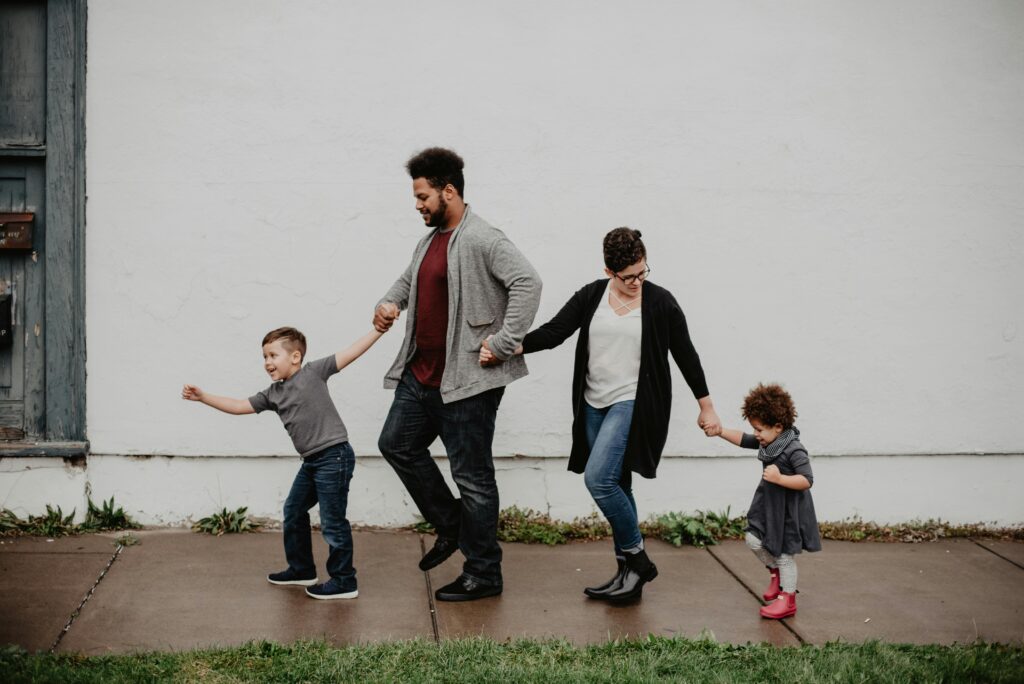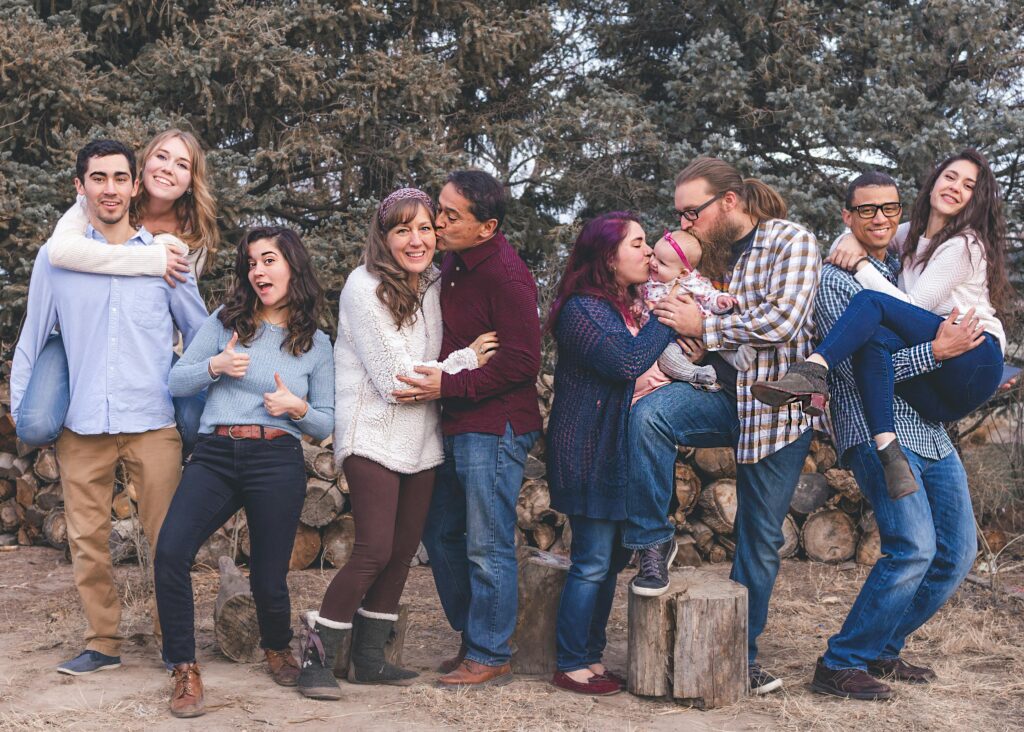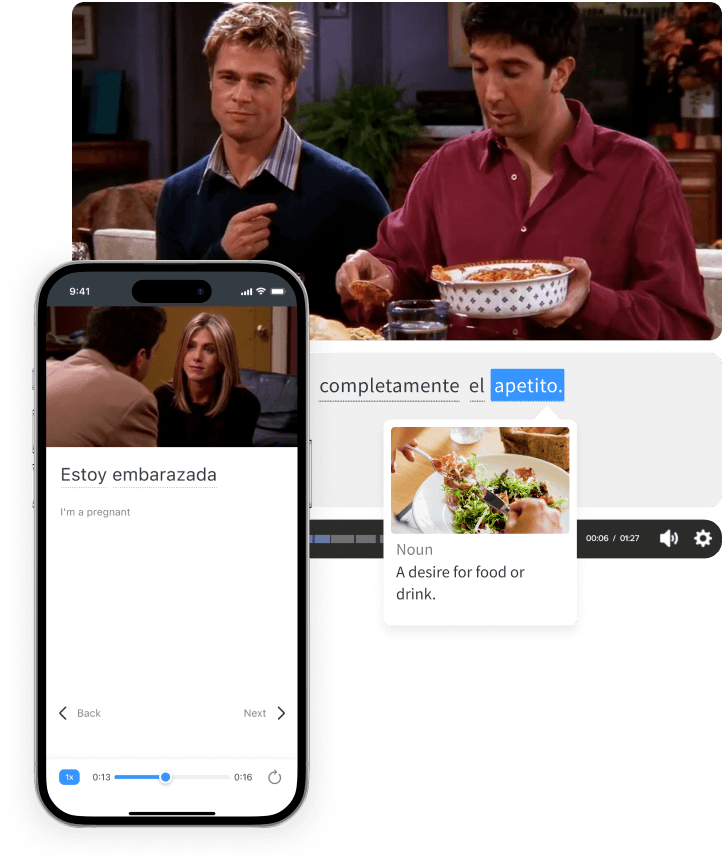
55 Spanish Family Words [With Quiz]
The topic of familia (family) comes up a lot in casual conversation, and learning some Spanish family words will help you talk about your own family and others.
We’ve complied 55 essential family words in Spanish—from the basics like madre and padre to extended and blended family members. No matter how big, messy or loca (crazy) your family is, this vocabulary will cover them.
Contents
- Spanish Words for Immediate Family
- Spanish Words for Extended Family
- The In-laws in Spanish
- Blended Family in Spanish
- Spanish Grammar Rules for Talking About Family
- Quiz on Spanish Family Words
- And One More Thing…
Download: This blog post is available as a convenient and portable PDF that you can take anywhere. Click here to get a copy. (Download)
Spanish Words for Immediate Family

Here are all the words you’ll need to talk about your immediate family. Remember that generally, noun plurals are formed by adding -os to reference a group of all males or a mix of males and females and -as for a group that’s all female.
I’ve included some plural male/mixed-gender forms, but if you’re referring to a group of female family members, don’t forget to change that ending!
- Padre — Father
- Madre — Mother
- Papá — Dad
- Mamá — Mom
- Papás / Padres — Parents
- Hermano — Brother
- Hermana — Sister
- Hermanos — Siblings
- Hijo — Son
- Hija — Daughter
- Hijos — Children
- Novio — Boyfriend
- Novia — Girlfriend
- Prometido – Fiancé
- Prometida – Fiancée
- Esposo — Husband
- Esposa — Wife
Let’s see some of these words used in the context of a sentence:
Me gustaría presentarte a mis padres. (I’d like to introduce you to my parents.)
No tengo ni hermanos ni hermanas. (I don’t have brothers or sisters.)
Tengo dos hermosas hijas. (I have two beautiful daughters.)
Spanish Words for Extended Family

If you have a big family like me, you’re going to need some more words to talk about your plethora of relatives. Here are all the essential words for extended family members:
- Abuelo — Grandfather
- Abuela — Grandmother
- Abuelos — Grandparents
- Nieto — Grandson
- Nieta — Granddaughter
- Nietos — Grandchildren
- Tía — Aunt
- Tío — Uncle
- Prima — Cousin (female)
- Primo — Cousin (male)
- Primos — Cousins
- Sobrina — Niece
- Sobrino — Nephew
- Padrino — Godfather
- Madrina — Godmother
To talk about “great” relatives, we use bis in Spanish. For example, “great-grandfather” is bisabuelo and “great-granddaughter” is bisnieta.
To talk about “great-great” relatives, we use tatar in Spanish. For example, “great-great-grandmother” is tatarabuela and “great-great-grandparents” is tatarabuelos.
Here are some example sentences using this vocabulary:
Mi tía es la única pelirroja de la familia. (My aunt is the only redhead in the family.)
¡Hay tantos primos en mi familia que no puedo contarlos a todos! (There are so many cousins in my family, I can’t count them all!)
A su sobrina y a su sobrino les gusta el helado. (Her niece and nephew like ice cream.)
The In-laws in Spanish

Marriage means the connecting of two families, and with it comes new relationships. Rather than just adding a phrase like “in-law” to the end of family words, the Spanish language has whole new words to describe family ties created through marriage:
- Suegro — Father-in-law
- Suegra — Mother-in-law
- Yerno — Son-in-law
- Nuera — Daughter-in-law
- Cuñado — Brother-in-law
- Cuñada — Sister-in-law
Let’s look at some of these words used in example sentences:
Su suegra es muy amable. (His mother-in-law is very nice.)
Pero su suegro es malhumorado. (But his father-in-law is grouchy.)
Tengo una cuñada y un cuñado. (I have one sister-in-law and one brother-in-law.)
Blended Family in Spanish

Marriage, especially later in life, can also mean adding step-relatives to your family. Here are the key words you’ll need to talk about these kinds of relationships:
- Padrastro — Stepfather
- Madrastra — Stepmother
- Hijastro — Stepson
- Hijastra — Stepdaughter
- Hijastros — Stepchildren
- Hermanastro — Stepbrother
- Hermanastra — Stepsister
- Medio hermano — Half-brother
- Media hermana — Half-sister
- Abuelastro — Step-grandfather
- Abuelastra — Step-grandmother
- Primastro — Step-cousin (male)
- Primastra — Step-cousin (female)
Here are a few examples:
Cuando mi mamá se casó con Juan, él se convirtió en mi padrastro. (When my mom married Juan, he became my stepfather.)
Aunque es mi hermanastra, es como una verdadera hermana para mí. (Even though she’s my stepsister, she’s like a real sister to me.)
Me agrada más mi abuela que mi abuelastra. (I like my grandmother more than my step-grandmother.)
For more practice with Spanish family vocabulary, you can watch a video like this one and repeat the words:
Spanish Grammar Rules for Talking About Family
Using the verb ser to talk about relatives
To talk about family members in Spanish, we use the verb ser (to be) since our family relationships are generally permanent or long-term. For example:
Ella es mi hermana. (She’s my sister.)
Somos hermanos. (We’re siblings.)
Son los hijos de mi primo. (They’re the children of my cousin.)
Describing family members with adjectives
When talking about people, we often use colorful adjectives to describe them. But remember, there are a few Spanish grammar rules that apply to adjectives:
1. Adjectives must agree in gender with the nouns they modify (masculine or feminine). This means you need to change an adjective to its feminine form to describe a feminine noun (usually by changing the final -o to -a) and vice versa.
2. Adjectives must agree in number with the noun they modify (singular or plural). Just add -s for vowel endings or -es for consonants.
3. Adjectives usually come after the nouns they modify. There are a few exceptions to that rule, as you’ll see in the examples below.
Take a look at these sentences that show how you might use adjectives with your family members:
Ese es el tío hablador. (That’s the talkative uncle.)
¡Ella es la tía loca! (She’s the crazy aunt!)
Este es mi sabio abuelo. (This is my wise grandfather.)
Mi hermano es adoptado. (My brother’s adopted.)
Mi prima está embarazada. (My cousin is pregnant.)
Regular practice and consistent immersion are key to making grammar rules like adjective placement come naturally to you.
Quiz on Spanish Family Words
Now that we’ve gone over some Spanish vocabulary for family members, it’s time to test what you’ve learned! Take the quiz below (without looking at the answers above!) and just refresh the page if you want to start over or retake it.
If you’re having trouble memorizing these words, try using a Spanish flashcard app for easy practice. Or you can use an immersive language program like FluentU.
FluentU takes authentic videos—like music videos, movie trailers, news and inspiring talks—and turns them into personalized language learning lessons.
You can try FluentU for free for 2 weeks. Check out the website or download the iOS app or Android app.
P.S. Click here to take advantage of our current sale! (Expires at the end of this month)

Now that you know some key Spanish family words, it’s time to practice them!
Make your own family tree and label it with these words and the names of your relatives.
Then share it with your family!
Download: This blog post is available as a convenient and portable PDF that you can take anywhere. Click here to get a copy. (Download)
And One More Thing…
If you've made it this far that means you probably enjoy learning Spanish with engaging material and will then love FluentU.
Other sites use scripted content. FluentU uses a natural approach that helps you ease into the Spanish language and culture over time. You’ll learn Spanish as it’s actually spoken by real people.
FluentU has a wide variety of videos, as you can see here:

FluentU brings native videos within reach with interactive transcripts. You can tap on any word to look it up instantly. Every definition has examples that have been written to help you understand how the word is used. If you see an interesting word you don’t know, you can add it to a vocab list.

Review a complete interactive transcript under the Dialogue tab, and find words and phrases listed under Vocab.

Learn all the vocabulary in any video with FluentU’s robust learning engine. Swipe left or right to see more examples of the word you’re on.

The best part is that FluentU keeps track of the vocabulary that you’re learning, and gives you extra practice with difficult words. It'll even remind you when it’s time to review what you’ve learned. Every learner has a truly personalized experience, even if they’re learning with the same video.
Start using the FluentU website on your computer or tablet or, better yet, download the FluentU app from the iTunes or Google Play store. Click here to take advantage of our current sale! (Expires at the end of this month.)


